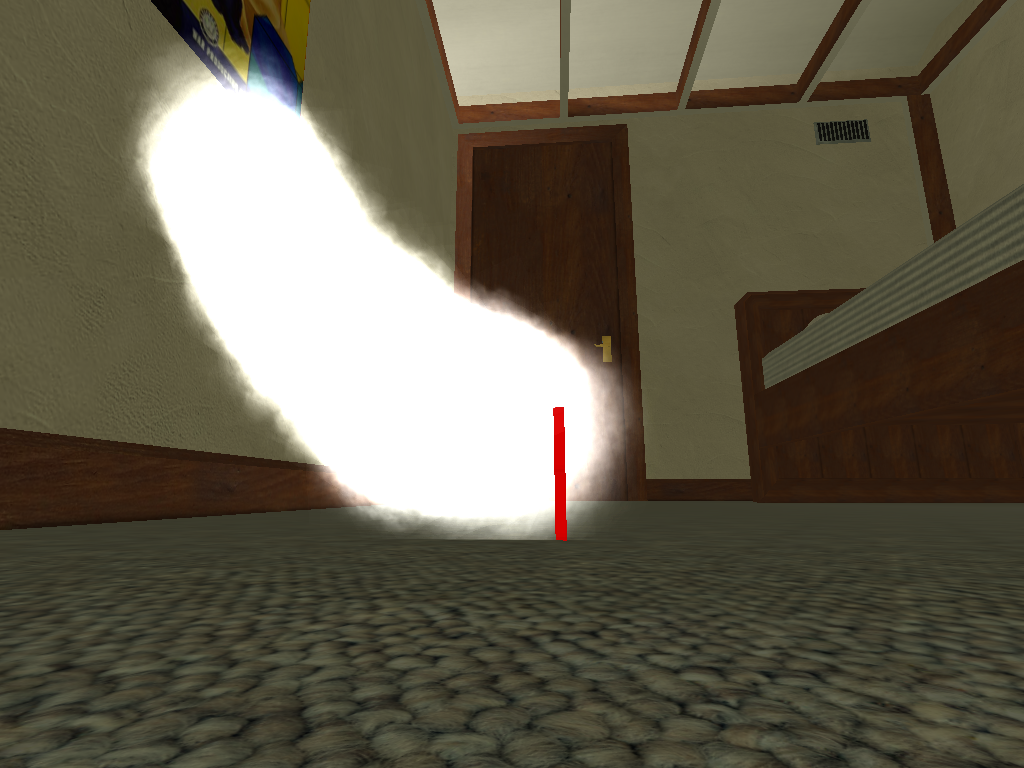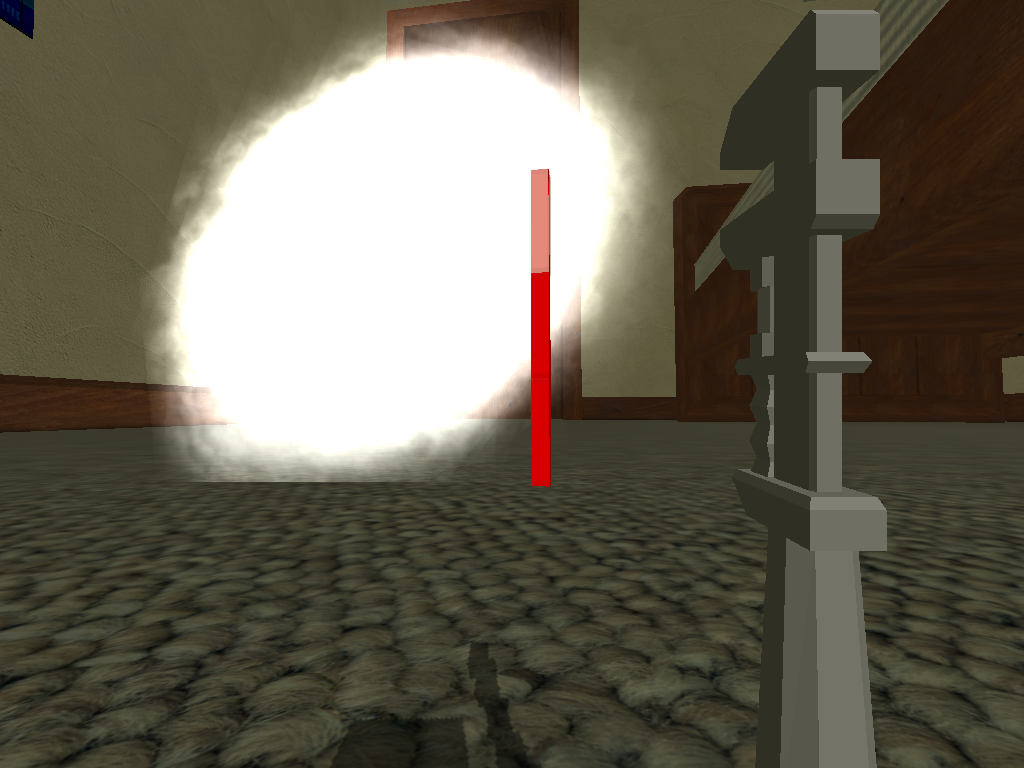What I need specifically is a perfect cone shape of cloud particles emitted in whichever direction specified with the brick, at a constant velocity. Problem is they keep rising up no matter what I try it seems, except when I set gravitycoefficient to something around 0.0025, but then the particles take a nosedive into the ground.
I set thetamin to 0 and thetamax to 1 to try and get a single straight line of particles emitted in the North direction (direction given by the brick emitter), script:
datablock ParticleData(Thickfog1Particle)
{
dragCoefficient = 0.0;
gravityCoefficient = 0.00;
inheritedVelFactor = 0.0;
constantAcceleration = 0.00;
lifetimeMS = 40000;
lifetimeVarianceMS = 55;
textureName = "base/data/particles/cloud";
spinSpeed = 0.0;
spinRandomMin = -10.0;
spinRandomMax = 10.0;
colors[0] = "0.5 0.5 0.5 0.0";
colors[1] = "0.5 0.5 0.5 0.7";
colors[2] = "0.5 0.5 0.5 0.6";
colors[3] = "0.5 0.5 0.5 0.0";
sizes[0] = 10.15;
sizes[1] = 10.10;
sizes[2] = 10.15;
sizes[3] = 10.10;
times[0] = 0.1;
times[1] = 0.2;
times[2] = 0.9;
times[3] = 1.0;
windCoefficient = 0.0;
useInvAlpha = false;
};
datablock ParticleEmitterData(Thickfog1Emitter)
{
ejectionPeriodMS = 500;
periodVarianceMS = 0;
ejectionVelocity = 0.5;
velocityVariance = 0.0;
ejectionOffset = 0.0;
thetaMin = 0;
thetaMax = 1;
phiReferenceVel = 360;
phiVariance = 360;
overrideAdvance = false;
particles = "Thickfog1Particle";
uiName = "Thickfog1";
};Picture of the result

I then tried several gravitycoefficients from 0.0000 to 0.0030 and it seems that anything under 0.0025 will have no effect on the upwards acceleration of the particles.
datablock ParticleData(Thickfog1Particle)
{
dragCoefficient = 0.0;
gravityCoefficient = 0.002;
inheritedVelFactor = 0.0;
constantAcceleration = 0.00;
lifetimeMS = 40000;
lifetimeVarianceMS = 55;
textureName = "base/data/particles/cloud";
spinSpeed = 0.0;
spinRandomMin = -10.0;
spinRandomMax = 10.0;
colors[0] = "0.5 0.5 0.5 0.0";
colors[1] = "0.5 0.5 0.5 0.7";
colors[2] = "0.5 0.5 0.5 0.6";
colors[3] = "0.5 0.5 0.5 0.0";
sizes[0] = 10.15;
sizes[1] = 10.10;
sizes[2] = 10.15;
sizes[3] = 10.10;
times[0] = 0.1;
times[1] = 0.2;
times[2] = 0.9;
times[3] = 1.0;
windCoefficient = 0.0;
useInvAlpha = false;
};
datablock ParticleEmitterData(Thickfog1Emitter)
{
ejectionPeriodMS = 500;
periodVarianceMS = 0;
ejectionVelocity = 0.5;
velocityVariance = 0.0;
ejectionOffset = 0.0;
thetaMin = 0;
thetaMax = 1;
phiReferenceVel = 360;
phiVariance = 360;
overrideAdvance = false;
particles = "Thickfog1Particle";
uiName = "Thickfog1";
};
At 0.0025 gravitycoefficient, we get this

As you can see, there's an unknown force causing the particles to slowly rise upwards. It can't be "nullified" by an equal opposite acceleration downwards (i.e., gravitycoefficient in this case). But, once the grav-coefficient value surpasses the upward acceleration, it completely overtakes it and becomes the only force acting on the particles. That means it's impossible to get these buggers to go in a straight line, they will always be arching either upwards or downwards. It's a dilemma.